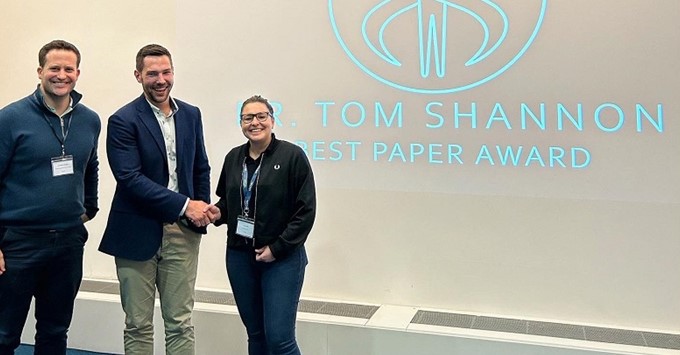
Dr Fraser Philp is a Lecturer in the School of Health Sciences. He recently won the Dr Tom Shannon Best Paper Award at the 2023 Clinical Movement Analysis Society (CMAS) conference for his work in biomechanics and human movement, specifically shoulder instability and muscle activity in young people. Fraser’s analysis utilised 3D movement analysis and surface electromyography which assesses muscle activity through the skin.
Can you explain a little more about your research?
Shoulder instability is where your shoulder blade and arm bone can slide apart completely (dislocation) or just a bit (subluxation).
Typically, human movement analysis in a clinical biomechanics research setting aims to understand how people walk, such as children with cerebral palsy. However, we wanted to see if it could push the boundaries of how movement analysis could be used in the upper-limb.
Funding from the Private Physiotherapy Education Foundation allowed us to analyse and measure differences between the movement of young people with and without shoulder instability.
Using Vicon 3D movement technology we were able to find consistent differences in some of the other upper-limb joints and muscles of children with shoulder instability. This may inform how we decide which treatments they get.
Future work in this area will hopefully allow us to advance the use of 3D movement technology and gain a better understanding of human movement to improve the lives of patients.
Why is the Dr Tom Shannon Best Paper Award such a special honour?
Dr Tom Shannon was co-founder of the Oxford Metrics Group and also Director of the motion capture tech company Vicon Motion Systems. It is more than likely you will have seen Vicon’s motion capture technology in many box office blockbusters however, it is also used in clinical settings.
Tom was a strong advocate for the movement analysis community and early career researchers. He was one of the first people I met in the movement analysis research community during my PhD. He was supportive, always happy to help a young researcher and keen to push the boundaries of what human movement analysis could do. Winning an award in honour of him will always be a highlight of my career.
The Dr Tom Shannon Best Paper Award was presented at CMAS for the first time this year in his memory.
What was your experience of the day?
The CMAS conference in Belfast back in 2015 was the first I ever attended. It was early on in my PhD and I remember being somewhat overwhelmed but I remember thinking that movement analysis was magic and that this was the community of clinical research practice I wanted to be in. What stood out most from that day was the sense of excitement around the work people were doing with movement analysis, the sense of community and the level of robust scientific debate and challenge that was taking place.
Returning to that same conference eight years later, I am pleased to say my presentation went much better than the first time but the excitement around the innovative research taking place remains.